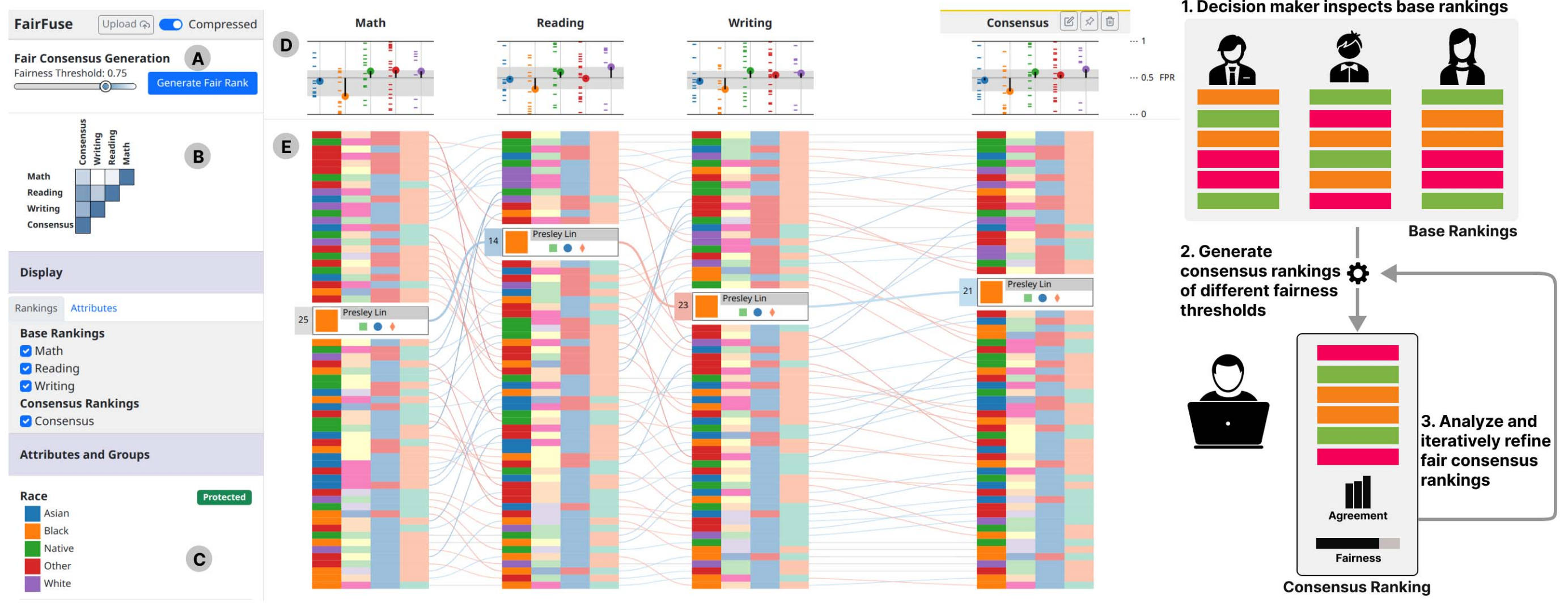Abstract
Fair consensus building combines the preferences of multiple rankers into a single consensus ranking, while ensuring any group defined by a protected attribute (such as race or gender) is not disadvantaged compared to other groups. Manually generating a fair consensus ranking is time-consuming and impractical— even for a fairly small number of candidates. While algorithmic approaches for auditing and generating fair consensus rankings have been developed, these have not been operationalized in interactive systems. To bridge this gap, we introduce FairFuse, a visualization system for generating, analyzing, and auditing fair consensus rankings. We construct a data model which includes base rankings entered by rankers, augmented with measures of group fairness, and algorithms for generating consensus rankings with varying degrees of fairness. We design novel visualizations that encode these measures in a parallel-coordinates style rank visualization, with interactions for generating and exploring fair consensus rankings. We describe use cases in which FairFuse supports a decision-maker in ranking scenarios in which fairness is important, and discuss emerging challenges for future efforts supporting fairness-oriented rank analysis. Code and demo videos available at https://osf.io/hd639/.
BibTeX
@inproceedings{shrestha2022fairfuse,
title={FairFuse: Interactive Visual Support for Fair Consensus Ranking},
author={Shrestha, Hilson and Cachel, Kathleen and Alkhathlan, Mallak and Rundensteiner, Elke and Harrison, Lane},
booktitle={2022 IEEE Visualization and Visual Analytics (VIS)},
pages={65--69},
year={2022},
organization={IEEE}
}```

